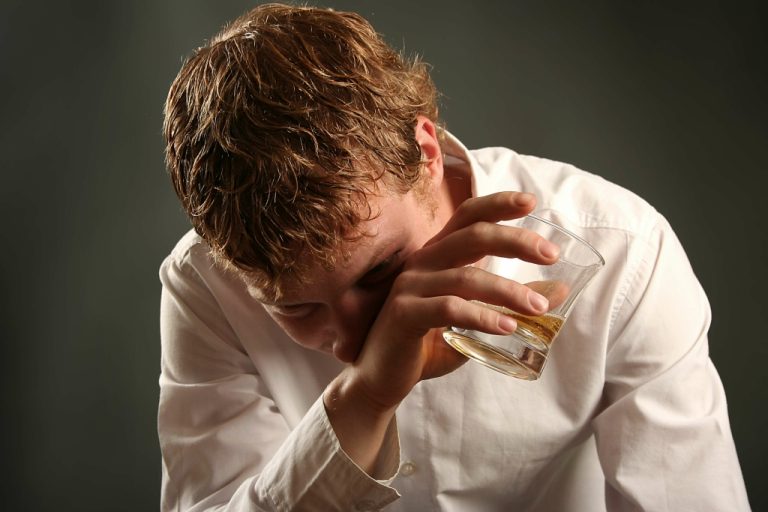Establishing a sober lifestyle is difficult during the early stages of recovery. You need somewhere safe you can go after treatment, a place where you’ll be free of triggers and surrounded by social support. These skills ensure that once you transition to independent living, you’re equipped not just to survive but thrive. Addressing these practical aspects of life reduces the stress and anxiety that can often trigger relapse. Those searching for the right sober living home should look for facilities with reputable staff, and a safe and productive living environment and culture. This blend of independence, accountability, and community support is pivotal in transitioning from rehabilitation settings to everyday life.

Do Sober Living Houses Work?
This transition can provide continued support while residents learn to apply their newly learned self-reliant skills to real-life situations while they remain drug- or alcohol-free in a community environment. Overall, both sober living homes and halfway houses can provide a supportive and safe environment for individuals in recovery to build a foundation for a healthy and fulfilling life in sobriety. The decision of which type of residential environment is best will depend on your specific needs and circumstances, as well as the level of support and structure you need to maintain your sobriety. To live in most recovery residences, you must be abstaining from drug and alcohol use. Some homes will require that you already be sober for a specific period of time.

Sober Houses in New York
Many residents complete a rehabilitation program prior to approaching a sober living home, but this is not mandatory. If you have already gone through rehab, but you’re not quite ready to live independently, this type of facility may be an excellent fit for you. Many sober living homes are connected with local therapy groups, counseling services, and job training programs. This access https://ecosoberhouse.com/ ensures you have the tools and support necessary to deal with life’s challenges without reverting to old habits. Addiction can be isolating, but in sober living homes, you are surrounded by individuals who understand the struggles and challenges that come with recovery. This shared experience fosters strong bonds and support networks that are invaluable during tough times.
Are There Non-12-Step Sober Living Homes?
- In contrast, identifying locations in need of more recovery homes can result in better success for your new business.
- They first came into existence when a group of active participants in the Alcoholics Anonymous group created a “12-step” residence.
- A core component of sober living homes is the emphasis on personal accountability coupled with peer support.
- The staff employed by sober living communities will be vetted and credentialed, giving you the confidence of a robust support system.
- Whereas Halloween is all about death, she said, May Day is a celebration of rebirth.
In partnership with the Aspen Mine Center and Face it Together, Wildflower can offer free in-person peer coaching with Eric Olson. “There’s lots of data that says PTSD therapy is enhanced and improved if you give somebody the responsibility of taking care of another living animal,” Murray said. National data trends suggest more than one in 10 veterans suffer from PTSD.
Addiction and Mental Health Resources
Newport Beach sober living homes owner indicted on suspicion of paying nearly $175000 to ‘body brokers’ – Los Angeles Times
Newport Beach sober living homes owner indicted on suspicion of paying nearly $175000 to ‘body brokers’.
Posted: Wed, 01 May 2024 01:31:00 GMT [source]
Finally, a transitional housing center with a sobriety requirement could be of great help if you’re struggling with housing insecurity, mainly due to addiction struggles. Certain age brackets can experience specific challenges when recovering from addiction. Sober living homes for the LGBTQ+ help them recover by focusing on self-acceptance, peer support, and mental health. People can experience specific challenges in recovery depending on their gender. By providing separate homes, facilitators can provide gender-specific care to improve the chances of success.
Job placement programs and educational opportunities are also available to help residents reintegrate into society as productive, sober individuals. This holistic approach to recovery ensures that you’re not just sober, but also prepared to tackle the challenges of everyday life after addiction. Understanding the benefits and structure of sober living homes can be a key factor in determining if this type of environment is suitable for your journey to long-term sobriety. With the right mindset and support, transitioning through a sober living home can be a productive and positive experience. Sober housing is where most recovering addicts go after completing an inpatient or drug rehabilitation program. This means that detoxification, therapy and other professional forms of treatment have already been administered and these people are on their final steps of the recovery process.
WHAT ARE THE BENEFITS OF SOBER LIVING?
- Often, house managers are offered free lodging and meals as part of the job benefits.
- Level IV employs an organizational hierarchy of credentialed staff and adds on clinical and administrative supervision.
- This may involve attending outpatient therapy sessions or engaging with peer support group meetings.
Some homes may require that you commit to staying for a specific period of time to help establish a solid foundation for life after recovery housing. Level III homes employ administrative staffers, such as a facility manager and certified staff of case managers, and maintain an organizational hierarchy. Adding on to previous Levels’ services, Level III includes an emphasis on life skill development, sober house offsite clinical services and in-house service hours. Halfway houses traditionally serve individuals recently released from incarceration, acting as a halfway point between prison and their own residence. A stay at a halfway house may be court mandated, but standard SLH residency is entirely up to the individual. Looking for more guidance as you consider opening and marketing a sober living home?
YOU STAY IN
For those who do find help, they often face a new challenge when they exit treatment and make the honest attempt to live a sober and clean lifestyle on their own. Unlike our San Diego location, our sober livings are only available to clients who have completed a minimum of six months in our primary or drug rehab programs. Take a your of our Men’s Sober Living as well as our other men’s programs.
What Amenities Do Sober Living Homes Offer?
Sober houses designed for college students have additional services that are specific to college environments and experiences. Many offer services to assist residents in academic achievements as well as resources to deal with social situations, peer pressure, and sober entertainment. These resources may be available in the form of a workshop, group discussion, or group activities. These homes also offer unique therapies designed to address the needs of students and may even offer partnerships with individual academic coaches. Tutors are also made available at sober living homes to help residents achieve academic success.



